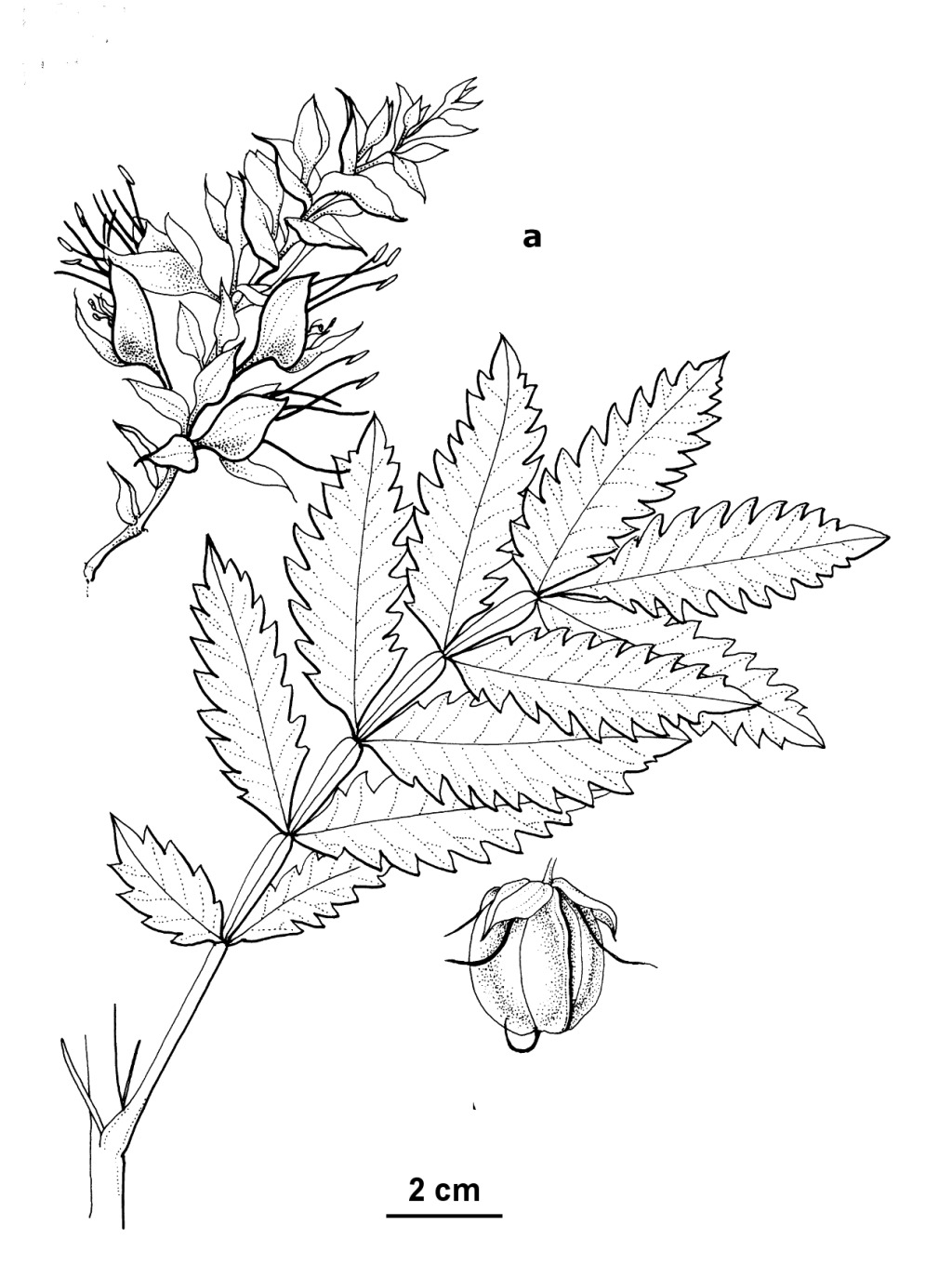Melianthus comosus
Vahl Tufted Honey-flowerErect shrub 2–3 m high; branches canescent or villous. Leaves 10–15 cm long; leaflets 9–11, oblong-lanceolate, 4–6 cm long, 10–20 mm wide, deeply serrate, subsessile, dark green with sparse minute stellate hairs above, grey-tomentose below; stipules subulate, 10–25 mm long, free. Racemes nodding or spreading, to c. 9 cm long; pedicels to c. 10 mm long; bracts ovate, to c. 15 mm long, acuminate. Flowers alternate; sepals conspicuously pouched at base, pubescent, greenish and pink, upper 2 broad-ovate, 10–20 mm long, with a dark red spot inside at the base, lower 3 lanceolate, shorter than upper pair; petals oblanceolate, 12–15 mm long, red. Capsule 25–30 mm long, 4-winged, stellate-downy; seeds ovoid to subglobose, 4–5 mm long. Flowers mainly winter and spring.
VVP, VRiv, GipP, WaP, Gold, CVU, GGr, EGU, HSF, Strz. Also naturalised SA. Native to South Africa. Commonly cultivated, and now becoming naturalised at a number of sites in drier parts of Victoria (e.g. Castlemaine, Inglewood, Steiglitz).
The leaves of this plant have an unpleasant odour and are apparently very poisonous to stock.
Jeanes, J.A. (1999). Melianthaceae. In: Walsh, N.G.; Entwisle, T.J., Flora of Victoria Vol. 4, Cornaceae to Asteraceae, pp. 138–139. Inkata Press, Melbourne.
 Spinning
Spinning

